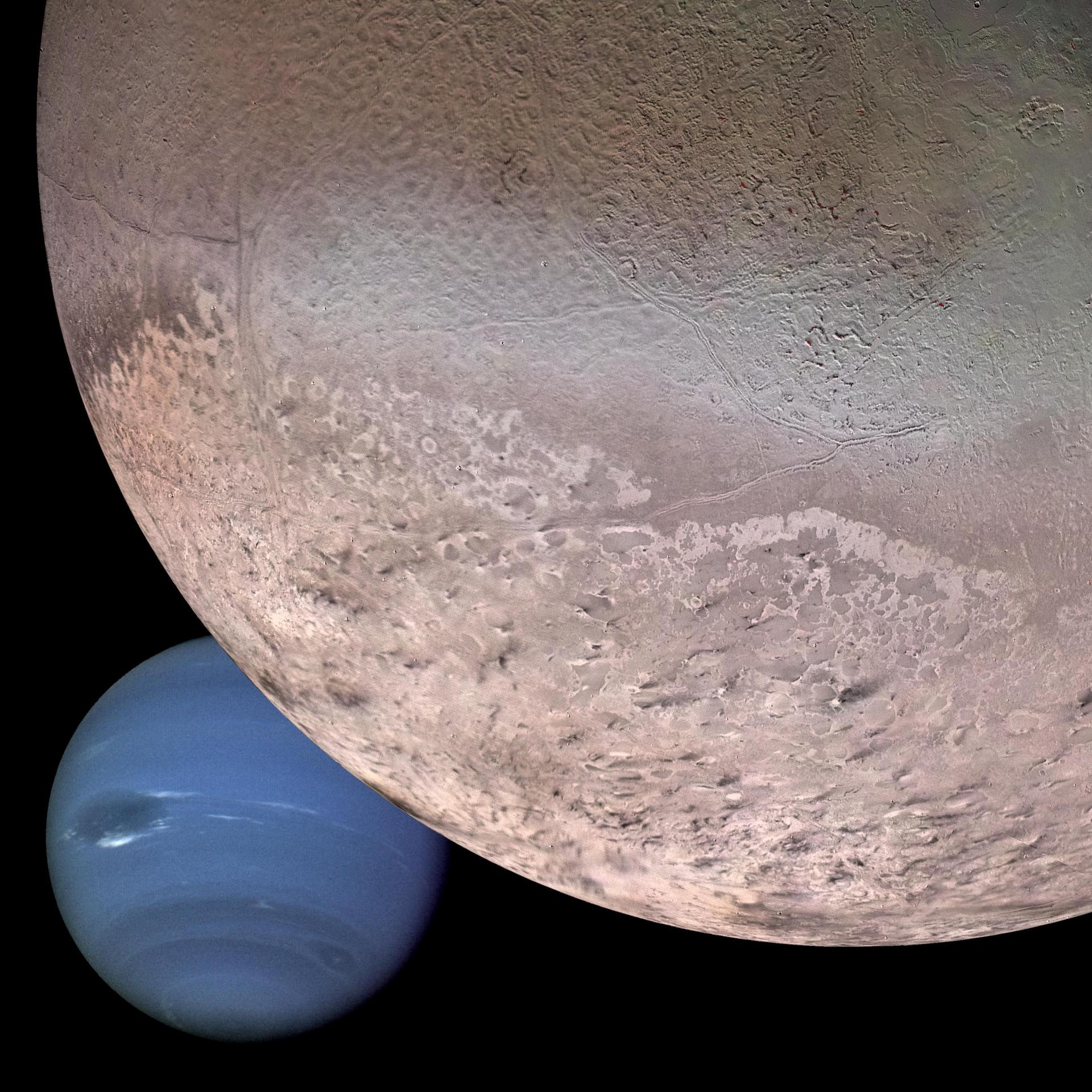
Neptune's magnetic poles are tipped to the side by roughly 47 degrees compared with the poles along which it spins. Earth-based observations announced in 2005 found that Neptune's rings are apparently far more unstable than previously thought, with some dwindling away rapidly, according to an article in the journal Icarus (opens in new tab).

The rings are thought to be relatively young and short-lived. Neptune is surrounded by unusual rings, which aren't uniform, but possess bright thick clumps of dust called arcs. In 2017, researchers were able to simulate the conditions that would cause diamonds to form in the lab, supporting the hypothesis that diamond rain occurs on Neptune (opens in new tab) and Uranus. The storm seemed to have vanished when the Hubble Space Telescope (opens in new tab) searched for it at a later date, and since then, Hubble has witnessed the appearance and then fading of other Great Dark Spots on Neptune (opens in new tab) over the past decade.īecause of the high temperatures and pressures that exist on Neptune and Uranus, scientists believe compressed carbon in the form of diamonds causes a "diamond rain" phenomenon on these icy giants. This oval-shaped, counterclockwise-spinning "Great Dark Spot" was large enough to contain the entire Earth, and moved westward at nearly 750 mph (1,200 km/h). These winds were linked with a large dark storm that Voyager 2 tracked in Neptune's southern hemisphere in 1989. What does Neptune look like?Īs-yet-unidentified compound and the result of the absorption of red light by methane in the planet's mostly hydrogen-helium atmosphere.ĭespite Neptune's distance from the sun (opens in new tab), which means it gets little sunlight to help warm and drive its atmosphere, Neptune's winds (opens in new tab) can reach up to 1,500 mph (2,400 km/h), the fastest detected in the solar system so far. Astronomers are still trying to figure out at what point a planet is so large that it may pick up a lot of gas in the area, making it difficult or impossible for life to exist. Like Earth, Neptune has a rocky core, but it has a much thicker atmosphere that prohibits the existence of life as we know it. Specifically, astronomers are interested in learning about the habitability of worlds that are bigger than Earth.

While Neptune is of interest because it is in our own solar system, astronomers are also interested in learning more about the planet to assist with exoplanet studies. Today, there are still many mysteries about the cool, blue planet, such as why its winds are so speedy and why its magnetic field is offset. Less convincing (or utterly boring) are the collaborationsĭon't Don't Do It (with Kendrick Lamar) andĮight-minute psychedelic pastiche Lightning Fire Magic Prayer, one of their career's peaks.Only one mission has flown by Neptune - Voyager 2 (opens in new tab) in 1989. N.E.R.D.'s No One Ever Really Dies (2017) excels mainly at His single Happy (2013), another innocuous pop-soul number, was included on his second album Girl (2014). Williams also composed Robin Thicke's megahit Blurred Lines (2013), reminiscent of Marvin Gaye's Got to Give it Up. Seeing Sounds (2008) meandered all over the map but delivered (at least)Ī dizzying sonic merry-go-round, while Nothing (2010) had little to offer Pharrell Williams debuted solo with In My Mind (2006)Ĭan I Have It Like That (featuring Gwen Stefani) and Number One (featuring Kanye West). In Search Of (2001), remixed the following year with live instrumentation, and especially Fly or Die (2004) indulged in a neurotic melange of sonic stereotypes and production techniques of metal, funk, soul and pop. with rapper Sheldon "Shay" Haley, as their "rock" side-project. Queen Latifah and Missy Elliott with her feminist-tinged fusion of hip-hop and rhythm'n'blues.Īlready among the most successful hip-hop producers, The Neptunes formed N.E.R.D. Penned Kelis Rogers' Kaleidoscope (1999), which launched the young


Virginia production team The Neptunes (Chad Hugo and Pharrell Williams) Pharrell Williams: In My Mind (2006), 5/10 ( Copyright © 1999-2018 Piero Scaruffi | Terms of use) The Neptunes: biography, discography, reviews, ratings, best albums


 0 kommentar(er)
0 kommentar(er)
